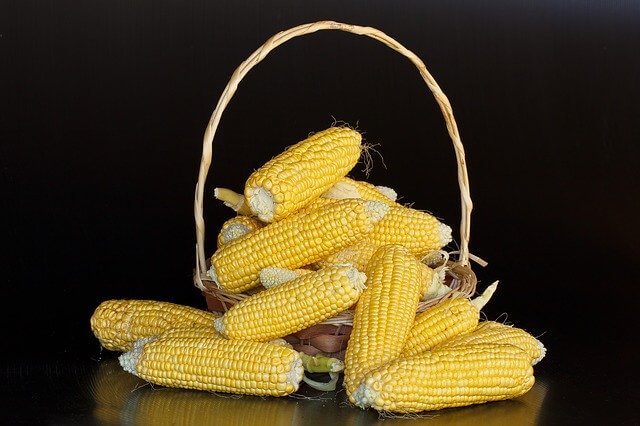Filé powder is a popular herbal powder that is commonly used in Cajun dishes in southern Louisiana. This powder, which is also known as gumbo filé, is created from the ground, dried leaves of the sassafras tree, which is found in eastern North America. At one time, there were health concerns about the safrole found in filé powder. However, research has shown that while large amounts of the carcinogen are found in the bark and roots, the leaves have almost undetectable amounts and are safe to add to any recipe. If your recipe calls for this delicious powder but it’s not available to you, you might find what you’re looking for in one of the 7 filé powder substitutes listed below.
What is filé powder?

This unique powder has been used for hundreds of years and was first used as a seasoning by the Choctaw Indians. As Cajuns moved into Louisiana, the spice became more popular and was soon used to flavor stews, soups, and gumbos. It is also often used as a thickener for various types of food. Filé powder is relatively easy to access, as it is sold in many health food stores and supermarkets. However, if it’s not available in your area, there are plenty of online options available too.
How healthy (or unhealthy) is it?
As you can see from the nutrition facts below, this powder doesn’t contain a large number of nutrients. However, it also contains no calories, fat, or cholesterol. The leaves used to make the powder also contain some compounds that are healthy for the human body. These include myrcene, which is a mild sedative and analgesic and has anti-inflammatory properties, as well as linalool, which also fights inflammation and acts as a mild sedative.
Nutritional Breakdown
Filé powder | Amount (per 100 g) | % Recommended daily intake |
Calories | 0 kcal | 0% |
Total fat | 0 g | 0% |
Saturated fat | 0 g | 0% |
Carbohydrates | 0 g | 0% |
Cholesterol | 0 mg | 0% |
Salt | 0 mg | 0% |
Protein | 0 g | 0% |
Calcium | 0 mg | 0% |
Vitamin B-12 | 0 ug | 0% |
Potassium | 0 mg | 0% |
(Based on nutritional information from USDA.)
What recipes use filé powder?
Filé powder is most commonly used as a thickening agent and a seasoning. However, it also has several other applications, such as in the creation of root beer. The most popular recipes that use filé powder are usually Cajun and include dishes like etouffee and gumbo. The powder has a flavor profile that is savory and has a hint of thyme. It could also be compared to the flavors of eucalyptus and root beer.
Why do we need filé powder substitutes?
If you run out of filé powder or need it immediately and cannot find it at your local grocery store, an alternative can give you the option of making your recipe without it. Many of these substitutes have the same flavor profile, and some can be used in different ways than traditional gumbo filé powder. Regardless of the dish you are concocting, the alternatives below will ensure you get a delicious and authentic-tasting meal even without the real thing.
Note:
🌱 = vegan
1. Okra 🌱
Best for: gumbo, stews, soups, and other dishes that need thickening.

Overview
Okra is a fantastic substitution for filé powder and is another traditional way to thicken up gumbo. Some believe it’s the most conventional thickening agent since it is rooted in West African cooking. When it began to gain popularity in the United States, okra was used in warm seasons, while filé powder was more commonly used in colder seasons.
Okra is a vegetable that includes a fiber called mucilage that can become slimy if the ingredient is cooked for too long. This component is what thickens up your dish.
Advantages
The biggest advantage of using okra as a filé powder substitute is that it thickens your stew or soup in the same way. It’s also versatile, and you can add as much or as little as you like to achieve your preferred consistency. It has a texture very similar to filé powder and won’t feel strange in the mouth. It can be added once the proteins and vegetables are cooked and simmered for a few minutes before serving.
Disadvantages
While okra has the same mouthfeel as you get with filé powder, it does not have the same flavor. It’s a substitute that is best used when the texture is more important than a distinctive filé powder flavor. If the flavor is more important to you, some of the other alternatives on this list may better suit your needs.
Nutritional breakdown
Okra | Amount (per 100 g) | % Recommended daily intake |
Calories | 44 kcal | 2% |
Total fat | 0 g | 0% |
Saturated fat | 0 g | 0% |
Carbohydrates | 8 g | 3% |
Cholesterol | 0 mg | 0% |
Salt | 3 mg | 0.2% |
Protein | 3 g | 6% |
Calcium | 80 mg | 8% |
Vitamin B-12 | 0 ug | 0% |
Potassium | 0 mg | 0% |
2. Roux 🥛 / 🌱
Best for: sauces, stews, soups, and gravy.

Overview
Another thickener that is commonly used when making Cajun dishes is roux. This is an ingredient that is traditionally created by frying wheat flour in butter or fat. It can be found in various colors from a light brown to a dark coffee hue, depending on how long you fry it. It can also be made vegan by using a vegan fat rather than dairy-based butter.
Advantages
This substitute for filé powder has a flavor that is difficult to create in any other way and can be used along with okra or filé to get the taste and thickness that is desired. Some people also use each of the three thickeners together, but this is far less common. If you are using roux for gumbo, a medium-brown version is recommended. This offers the reddish color that the dish is most famously known for.
Disadvantages
One of the problems associated with this substitute is that it isn’t vegan by default. In addition to that, it requires more preparation to use in a dish. This makes it less convenient than filé powder, which you can simply add to a meal before completing it.
Nutritional breakdown
Roux | Amount (per 100 g) | % Recommended daily intake |
Calories | 541 kcal | 26% |
Total fat | 40 g | 66% |
Saturated fat | 25 g | 192% |
Carbohydrates | 39 g | 14% |
Cholesterol | 107 mg | 36% |
Salt | 322 mg | 17% |
Protein | 5 g | 10% |
Calcium | 0 mg | 0% |
Vitamin B-12 | 0 ug | 0% |
Potassium | 0 mg | 0% |
3. Corn starch 🌱
Best for: soups, marinades, gravy, sauce, pie, and casseroles.

Overview
Corn starch can also be used as a thickener for Cajun dishes, but it has more of a neutral taste than the substitutes we’ve already listed. It’s made from a part of corn kernels called the endosperm. It is a common ingredient that can be used to thicken up stews and soups, as well as for making sugar and corn syrup.
Advantages
This substitute works well if you aren’t a fan of the texture of okra and you want to avoid the high amount of fat found in a roux. It’s also easy to make compared to the other options. All you need to do is mix corn starch with a bit of water to create a mixture of the two. When your dish is almost done cooking, add in the mixture to thicken up your meal.
Disadvantages
Corn starch does not have the same flavor profile as filé powder, having little to no flavor of its own. It will thicken up your dish, but it can also dilute the flavor. Because of the dilution, it’s a good idea to add more significant amounts of different spices and ingredients with bold flavors to ensure the end result has plenty of flavor to it.
Nutritional breakdown
Corn starch | Amount (per 100 g) | % Recommended daily intake |
Calories | 375 kcal | 18% |
Total fat | 0 g | 0% |
Saturated fat | 0 g | 0% |
Carbohydrates | 88 g | 32% |
Cholesterol | 0 g | 0% |
Salt | 0 mg | 0% |
Protein | 0 g | 0% |
Calcium | 0 mg | 0% |
Vitamin B-12 | 0 ug | 0% |
Potassium | 0 mg | 0% |
(Based on nutritional information from USDA.)
4. Root beer 🌱
Best for: barbeque proteins, desserts, gumbo, and chicken wings.

Overview
Root beer is a popular beverage, but it can also be used an ingredient in a wide variety of dishes, both Cajun and otherwise. The drink is sweet and associated with North America, with a primary flavor of sassafras. Most store-bought root beef is caffeine-free, carbonated, and has a foamy head on top. This beverage has been around since the 1860s, but similar drinks have existed for hundreds of years.
Advantages
The flavor of sassafras that you might be looking for in a filé powder substitute is also found in root beer, which makes it a popular alternative. If you are most concerned with achieving an authentic taste rather than the thickening power of the powder, this is a great choice. It is not going to taste exactly the same, but it’s about as close as you can get to the real thing.
Disadvantages
While root beer has a flavor similar to filé powder, the texture is nowhere near the same. Rather than being a thickening agent, root beer is a liquid and can add moisture to a dish. If thickening is essential to a recipe, such as gumbo, you may want to use an additional thickener such as corn starch or okra along with the root beer for best results.
Nutritional breakdown
Root beer | Amount (per 100 ml) | % Recommended daily intake |
Calories | 47 kcal | 2% |
Total fat | 0 g | 0% |
Saturated fat | 0 g | 0% |
Carbohydrates | 12 g | 0% |
Cholesterol | 0 g | 0% |
Salt | 10 mg | 0.5% |
Protein | 0 g | 0% |
Calcium | 0 mg | 0% |
Vitamin B-12 | 0 ug | 0% |
Potassium | 0 mg | 0% |
(Based on nutritional information from USDA.)
5. Arrowroot powder 🌱
Best for: sour sauces, stews, gravy, soups, pancakes, and breading.
Overview
For thickening soups, sauces, gumbos, and more, arrowroot powder is another great option. This flavorless substitute for filé powder is made of starch from tropical plants such as cassava and arrowroot. It is a white powder that can thicken up dishes twice as much as wheat. It also has no protein and is entirely gluten-free, making it a great option you’re looking to cut down on gluten.
Advantages
Arrowroot powder provides many of the same benefits as filé powder, and can even be a better option in some cases. Compared to filé powder or corn starch, it is more transparent in appearance, which helps in showing off the other ingredients in your recipe. If you are making dishes to freeze for later, it will also stand up better than filé powder or corn starch would. As a substitute, you should use one tablespoon of arrowroot powder and one tablespoon of water for every one cup of gumbo or soup.
Disadvantages
This is an ingredient without much flavor, although you can add a dash of root beer if you want to liven it up a little bit. Arrowroot can also have a large number of calories and carbohydrates compared to filé powder, which might be a downfall if you’re looking to lose weight. However, since you use very little of the ingredient, this shouldn’t be too much of an issue.
Nutritional breakdown
Arrowroot flour | Amount (per 100 g) | % Recommended daily intake |
Calories | 357 kcal | 17% |
Total fat | 0.1 g | 0.2% |
Saturated fat | 0 g | 0% |
Carbohydrates | 88 g | 32% |
Cholesterol | 0 mg | 0% |
Salt | 2 mg | 0.1% |
Protein | 0.3 g | 0.6% |
Calcium | 40 mg | 4% |
Vitamin B-12 | 0 ug | 0% |
Potassium | 11 mg | 0.3% |
6. Eggplant 🌱
Best for: salads, frittatas, gumbo, soups, and stews.

Overview
Eggplants, also known as aubergines, are a vegetable with a large number of nutrients and provides fiber to your diet. Many eggplants on the market are dark purple and quite large, but the size, color, and shape can vary from shades of purple to green or white. Eggplants can also be everything from thin and long to squat and oblong.
Advantages
As an alternative to filé powder, the eggplant is a good choice that enhances the flavors of the other ingredients while thickening up a gumbo or other soup. If you don’t like the texture of okra, this is ideal, as it offers a creamier feel with tang and spice. The eggplant can be cut into medium-sized pieces, which are then seasoned and drizzled with oil or other fat before being roasted. After they are prepared, you can blend them up and add them to the recipe to simmer for a few minutes.
Disadvantages
While this vegetable has a similar taste to filé powder, it may add too much texture to the dish if not blended properly. It also contains many oxalates, which in large amounts can cause kidney or gall bladder stones. If you’re prone to these issues, you may want to opt for another option.
Nutritional breakdown
Eggplant | Amount (per 100 g) | % Recommended daily intake |
Calories | 25 kcal | 1% |
Total fat | 0.2 g | 0.3% |
Saturated fat | 0 g | 0% |
Carbohydrates | 6 g | 2% |
Cholesterol | 0 mg | 0% |
Salt | 2 mg | 0.1% |
Protein | 1 g | 2% |
Calcium | 9 mg | 1% |
Vitamin B-12 | 0 ug | 0% |
Potassium | 228 mg | 6% |
(Based on nutritional information from USDA.)
7. Nopal leaves 🌱
Best for: stews, gumbo, soups, and stews.

Overview
Nopales are a type of edible cactus produced by the prickly pear cactus and are often used in Mexican cooking. The leaves from this cactus are quite nutritious and add a hefty dose of fiber to the diet. These leaves can be used as a filé powder substitute, but choosing the best leaves is essential. These will be solid, thick, and have no wrinkles, bruises, or cracks in them. The best leaves will also be medium or dark green in color.
Advantages
Nopale leaves are crisp and offer a tart, fresh flavor that works well in gumbo, salad, soup, and stew. Peeled and chopped leaves can be added into gumbo towards the end of the cooking time, as it only needs to simmer for a short period of time. Canned and bottled leaves can be found in many supermarkets, which makes it easier to use when needed in a hurry.
Disadvantages
If you plan to use fresh nopale leaves, the preparation can take more time and effort than some might prefer. Removing the spines from the leaves can be a challenge, as can the actual peeling. Using pre-packaged leaves or choosing a different option may be a better choice if you don’t want too much prep work.
Nutritional breakdown
Nopal leaves | Amount (per 100 g) | % Recommended daily intake |
Calories | 16 kcal | 0.8% |
Total fat | 0.1 g | 0.2% |
Saturated fat | 0 g | 0% |
Carbohydrates | 3 g | 1% |
Cholesterol | 0 mg | 0% |
Salt | 21 mg | 1% |
Protein | 1 g | 2% |
Calcium | 164 mg | 16% |
Vitamin B-12 | 0 ug | 0% |
Potassium | 257 mg | 6% |
(Based on nutritional information from USDA.)
The Bottom Line
Filé powder is an essential part of creating delicious Cajun dishes such as gumbo, stews, and hearty soups. However, it also has very little in the form of nutrients and may not be available in every grocery store. The filé powder substitutes noted above can be used in a variety of recipes to recreate the flavor and thickening effects of the real thing.
Top vegan picks
The great thing about the substitutes on our list is that all of them are available in a vegan form. If you are looking to add some extra veggies to your dish, eggplant or okra are perfect options. Those who want something a bit simpler and still vegan can look toward favorites such as corn starch or arrowroot powder. If you don’t mind changing up the texture, root beer is great for creating a similar taste to filé powder.
Top healthy picks
When health is your top priority, you can’t go wrong with swapping out filé powder for okra, eggplant, or nopale leaves. Each of these ingredients will add nutrients to whatever recipe you are making without too many extra calories. Unlike roux, which has a large amount of fat and salt, these ingredients are nutritious and can be eaten regularly as part of a healthy diet. It’s also never a bad idea to get more vegetables into your diet.
Top convenient picks
For those who are looking for the most convenient way to substitute filé powder in gumbo or other dishes, corn starch is probably your best bet. The preparation simply involves mixing it with water, and most people will already have it in their pantries. Arrowroot powder is another great choice here, but is less likely to be sitting around in your kitchen already.
Top convincing picks
The most convincing filé powder substitute comes down to one of two options. The first is okra, which has thickening properties and adds a nice flavor to your dishes. The other is root beer, which relies on the same sassafras that gives the powder its flavor. Those who choose root beer should remember that it does not add thickness, so it may need to be combined with other ingredients in some recipes.
Sources:
https://www.thespruceeats.com/what-is-file-powder-3050538
https://www.spiceography.com/gumbo-file-powder/
https://www.thespruceeats.com/what-is-arrowroot-powder-1328463
https://www.eatingisimportant.com/home/eggplant-pros-and-cons
https://www.bonappetit.com/recipes/slideshow/eggplant-recipes


Thank you for your information. Corn starch is the best for soup, but I have never tried arrowroot powder and root beer for my recipes. I’m having a party this weekend and we’re going to make chicken andouille filé gumbo, I will substitute root beer for file powder. Hope it will taste well.